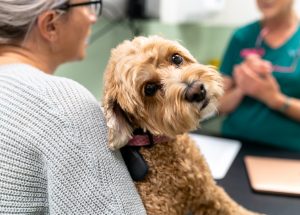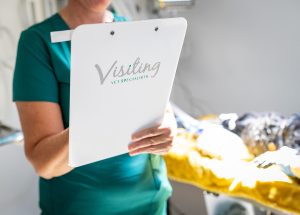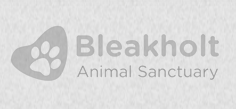Patient Journey
What happens when your pet is seen by a visiting specialist?
A patients journey:
So let us explain a little more about a typical patients journey when a visiting surgery specialist comes to your local veterinary practice to operate for you.
Your veterinary surgeon will have discussed your pets condition with Catherine prior to meeting you. Catherine will have seen the clinical notes, any blood results, xrays, ultrasound reports or CT scans.
A very important part of day is meeting you, the owner and your pet in person. It allows Catherine to gauge the severity and complexity of your pets condition, guiding you appropriately
But importantly, it is knowing the small details about your pets daily routine, their likes, dislikes, habits etc enables us to decide together if proposed surgery and the required post operative care is suitable, all pets are so different. It is vital that the correct level of surgical intervention is chosen for your pet and sometimes less is more. That initial consultation also gives you the chance to ask any questions you wish.
Your pet is carefully examined with you present and time is spent detailing the surgical procedure, where possible Catherine shows you diagrams and photos of similar patients to help your understanding.
We discuss the after care, so that you can temporarily modify the home as required , as often some restriction is needed for recuperation.
Importantly too, we chat about the expectations of the surgical procedure – is the surgery going to completely resolve the problem, or are we to expect a degree of ongoing compromise. This particularly important when we deal with cancer patients, as often the surgery alone cannot be 100% curative.
If you feel reassured and comfortable with the plan to proceed, then often the surgery is performed the same day, with no waiting time for your pet.
We bring all the surgical equipment for the proposed surgery and organise any accessories for post op management to make the healing phase as simple as possible. We can’t tell a cat or dog to not lick their surgical site, so often protective aids are useful, and we have a much better variety available nowadays.
Being mobile service does not mean that equipment is limited in anyway, we have access to all the modern forms of cautery and energy heat sealing equipment to prevent or limit blood loss and the use of ultrasonographic precision cutting instruments for maxillofacial work.
The anaesthesia and analgesia (that’s pain relief) is over seen by the surgery specialist but is formulated, delivered and monitored by our very capable and diligent veterinary nurses.
We always phone you when your pet is into recovery and where appropriate send you some photos of the surgical site, any dressings applied and importantly a photo of your much loved pet safe and sound.
Home time is arranged, usually the same day and a tailored discharge note made available so that you can read at your leisure and not have to remember lots of information when understandably you just want to focus on getting your pet back home and settled.
Check ups are done with your familiar vets and nursing team, but visiting vets are always on hand for additional support if needed.







